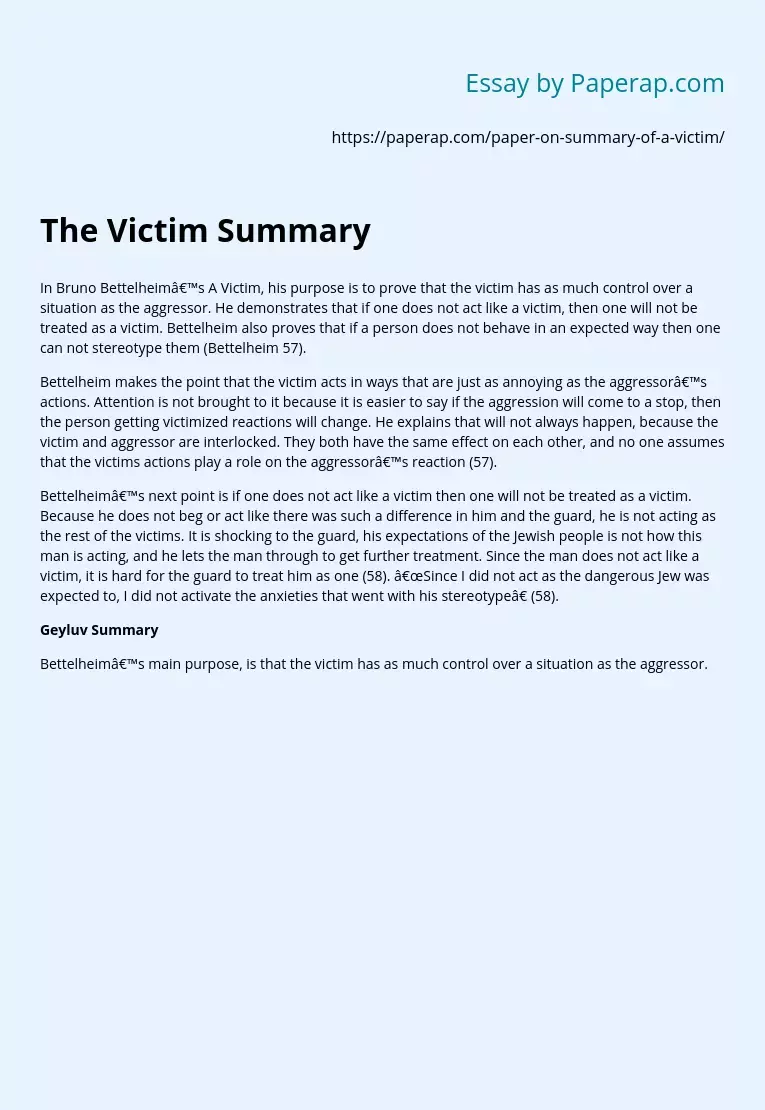Bruno Bettelheim’s A Victim Summary
In Bruno Bettelheim’s A Victim, his purpose is to prove that the victim has as much control over a situation as the aggressor. He demonstrates that if one does not act like a victim, then one will not be treated as a victim.
Bettelheim also proves that if a person does not behave in an expected way then one can not stereotype them (Bettelheim 57).
Bettelheim makes the point that the victim acts in ways that are just as annoying as the aggressor’s actions.
Attention is not brought to it because it is easier to say if the aggression will come to a stop, then the person getting victimized reactions will change. He explains that will not always happen, because the victim and aggressor are interlocked. They both have the same effect on each other, and no one assumes that the victims actions play a role on the aggressor’s reaction (57).
Bettelheim’s next point is if one does not act like a victim then one will not be treated as a victim. Because he does not beg or act like there was such a difference in him and the guard, he is not acting as the rest of the victims. It is shocking to the guard, his expectations of the Jewish people is not how this man is acting, and he lets the man through to get further treatment. Since the man does not act like a victim, it is hard for the guard to treat him as one (58).
“Since I did not act as the dangerous Jew was expected to, I did not activate the anxieties that went with his stereotype” (58).
Bettelheim’s main purpose, is that the victim has as much control over a situation as the aggressor.
Bruno Bettelheim’s A Victim Summary. (2019, Dec 05). Retrieved from https://paperap.com/paper-on-summary-of-a-victim/

